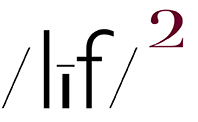All photos (embiggenable)
IN MY LAST ENTRY I WROTE ABOUT THE MATURATION of the medium, c.1970s, a key element of which included the realization of its unique and intrinsic relationship with, and as a cohort of, the real world wherein any thing and every thing was color-ed and considered to be referent acceptable. Or, as Szarkowski wrote…
“… [an] encompassing motif [that] is itself so broad and hopelessly unformed, with so many aspects, angles, details, sotto voce asides, picturesque subplots, and constantly shifting patterns-and none of this clearly labeled…”
This casting aside-by the fine-art picture making crowd-of the then conventional what-is-appropriate-subject-matter wisdom was, iMo, a very belated-case in point, re: hidebound, insular thinking-recognition / realization of the picture making practice employed by the ubiquitous, next door snapshot-ers ever since the advent of the earliest amateur, handheld film cameras. Snapshooters who-as an English writer observed in 1893-
“… run rampant over the globe, photographing objects of all sorts, sizes and shapes, under almost every condition, without ever pausing to ask themselves, is this or that artistic? … They spy a view, it seems to please, the camera focused, the shot is taken! There is no pause … To them, composition, light, shade, form, and texture are so many catch phrases…”
As photographers, Fine-Art Division, pursued / explored this expansive picture making possibility landscape, the pictures they produced tended to have-to the casual viewer-the look of amateur-ish color snapshots. And, in an almost humorous, historic recurrence, the response-from “serious” amateurs and photo critics alike-to this sea see change was a nearly word-for-word repetition of the aforementioned 1893 “run rampant” observation. Case in point, Szarkowski’s introduction of the William Eggelston’s Guide exhibition / book was greeted by the then “traditional photo world with outright derision and scorn: “must be a joke”, “a put-on”, “can’t be serious”, etc., etc. Quite obviously, Szarkowski had a different opinion:
“… such pictures often bear a clear resemblance to the Kodachrome slides of the ubiquitous neighbor next door … it should not be surprising if the best photography of today is related in iconography and technique to the contemporary standard of vernacular camera work, which in fact, is often rich and surprising. The difference between the two is a matter of intelligence, imagination*, intensity, precision and coherence.”
Szarkowski recognized that what was happening at the time; a significant group of phorographers where striving to break free of conventional picture making “wisdom”, all the while in pursuit of creating a distinct art form with a unique visual syntax.
an ode ~ (embiggenable)
*I never imagined that my kitchen would be such fertile ground for picture making. On the other hand, once I began to make pictures therein, I continued to do so cuz I could, if I kept my eye and sensibilities open, imagine that a world of unknown picture making possibilities might just be lurking therein.
I believe that what one is drawn to-or chooses-to photograph is a creative act-innate or conscious-of one’s own unfettered imagination.
